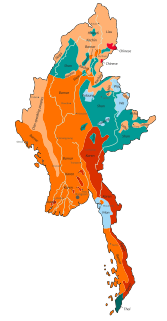 W
WThere are approximately a hundred languages spoken in Myanmar. Burmese, spoken by two-thirds of the population, is the official language.
 W
WArakanese is a language closely related to Burmese, of which it is often considered a dialect. "Arakan" is the former name for the Rakhine region. Arakanese can be divided into three dialects: Sittwe–Marma, Ramree, and Thandwe. It is the native language of the Rakhine, Marma and Kamein peoples.
 W
WBurmese is a Sino-Tibetan language spoken in Myanmar where it is an official language and the language of the Burmans, the country's principal ethnic group. Although the Constitution of Myanmar officially recognizes the English name of the language as the Myanmar language, most English speakers continue to refer to the language as Burmese, after Burma, the country’s once previous and currently co-official name. In 2007, it was spoken as a first language by 33 million, primarily the Burman people and related ethnic groups, and as a second language by 10 million, particularly ethnic minorities in Myanmar and neighboring countries. In 2014 the Burmese population was 36.39 million, and has been estimated at 38.2 million as of April 2020.
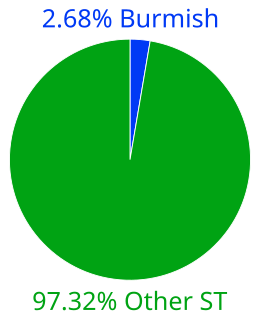 W
WThe Burmish languages are Burmese, including Standard Burmese, Arakanese and other Burmese dialects such as the Tavoyan dialects as well as non-literary languages spoken across Myanmar and South China such as Achang, Lhao Vo, Lashi, and Zaiwa.
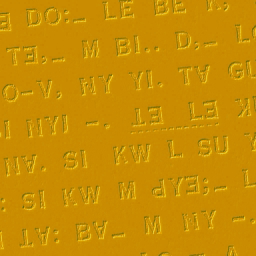 W
WThe Fraser or Old Lisu script, is an artificial script invented around 1915 by Sara Ba Thaw, a Karen preacher from Myanmar and improved by the missionary James O. Fraser, to write the Lisu language. It is a single-case (unicameral) alphabet. It was also used for the Naxi language, e.g. the 1932 Naxi Gospel of Mark and used in the Zaiwa or Atsi language e.g. the 1938 Atsi Gospel of Mark.
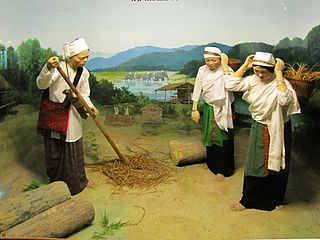 W
WKhamti language is a Southwestern Tai language spoken in Myanmar and India by the Khamti people.
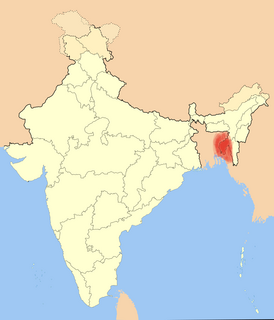 W
WKokborok is the main native language of the Tripuri people of the Indian state of Tripura and neighbouring areas of Bangladesh. Its name comes from kok meaning "verbal" and borok meaning "people" or "human". Kokborok or Tripuri is one of the ancient language of North East India.
 W
WThe Lolo-Burmese languages of Burma and Southern China form a coherent branch of the Sino-Tibetan family.
 W
WKedah Malay or Kedahan or as it is known in Thailand, Syburi Malay is a variety of the Malayan languages mainly spoken in the northwestern Malaysian states of Perlis, Kedah, Penang, and northern Perak and in the southern Thai provinces of Trang and Satun. The usage of Kedah Malay was historically prevalent in southwestern Thailand before being superseded by the Thai language. Enclaves of Kedah Malay can be found in Kawthaung District in Myanmar; Ranong and Krabi in upper southern Thailand; Jaring Halus, Langkat and Acheh in Sumatra, Indonesia and up north in Bangkok, central Thailand, where most of the Kedah Malay speakers are descendants of historical settlers from Kedah.
 W
WThe Mon language is an Austroasiatic language spoken by the Mon people. Mon, like the related Khmer language, but unlike most languages in mainland Southeast Asia, is not tonal. The Mon language is a recognised indigenous language in Myanmar as well as a recognised indigenous language of Thailand.
 W
WPalaung, also known as De'ang, is a Mon–Khmer dialect cluster spoken by over half a million people in Burma and neighboring countries. The Palaung people are divided into Palé, Rumai, and Shwe, and each of whom have their own language. The Riang languages are reported to be unintelligible or only understood with great difficulty by native speakers of the other Palaung languages.
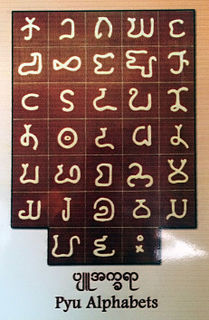 W
WThe Pyu language is an extinct Sino-Tibetan language that was mainly spoken in what is now Myanmar in the first millennium CE. It was the vernacular of the Pyu city-states, which thrived between the second century BCE and the ninth century CE. Its usage declined starting in the late ninth century when the Bamar people of Nanzhao began to overtake the Pyu city-states. The language was still in use, at least in royal inscriptions of the Pagan Kingdom if not in popular vernacular, until the late twelfth century. It became extinct in the thirteenth century, completing the rise of the Burmese language, the language of the Pagan Kingdom, in Upper Burma, the former Pyu realm.
 W
WThe Pyu script is a writing system used to write the Pyu language, an extinct Sino-Tibetan language that was mainly spoken in present-day central Burma. It was based on the Brahmi-based scripts of both north and south India. The best available evidence suggests that the Pyu script gradually developed between the 2nd and 6th centuries CE. The Pyu script's immediate precursor appears to be the Kadamba script of southwest India. The early period Pyu inscriptions always included interlinear Brahmi scripts. It was not until the 7th and 8th centuries that Sri Ksetra's inscriptions appeared all in the Pyu script, without any interlinear Brahmi.
 W
WRohingya, also known as Ruáingga, is an Indo-Aryan language spoken by the Rohingya people of Rakhine State, Myanmar. It is an Eastern Indo-Aryan language belonging to the Bengali–Assamese branch, and is closely related to the Chittagonian language spoken in neighbouring Bangladesh. The Rohingya and Chittagonian languages have a high degree of mutual intelligibility.
 W
WSingpho is a dialect of the Jingpho language spoken by the Singpho people of Arunachal Pradesh and Assam. It is spoken by at least 3,000 people. "Singpho" is the local pronunciation of "Jingpho".
 W
WSouthwestern Mandarin, also known as Upper Yangtze Mandarin, is a Mandarin Chinese language spoken in much of Southwest China, including in Sichuan, Yunnan, Chongqing, Guizhou, most parts of Hubei, the northwestern part of Hunan, the northern part of Guangxi and some southern parts of Shaanxi and Gansu. Southwest Mandarin is about 50% mutually intelligible with Standard Chinese.